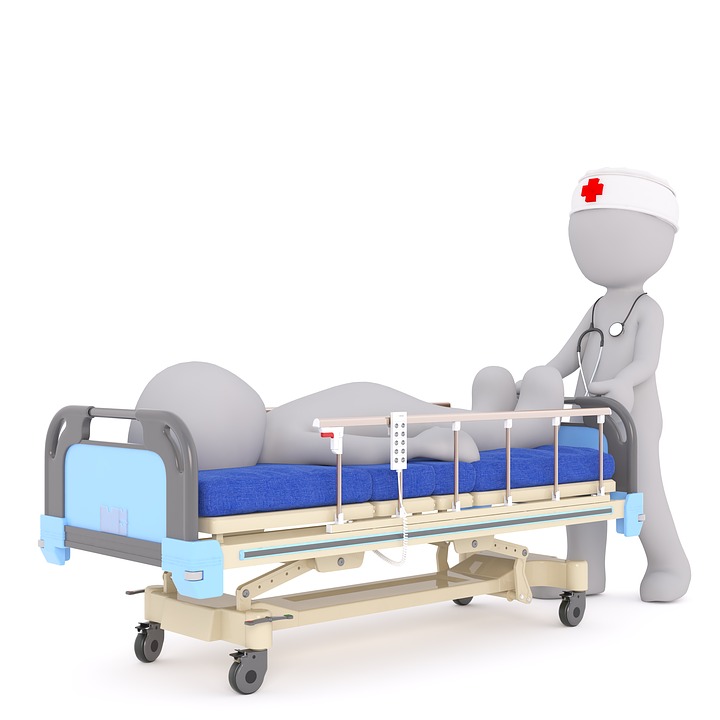
The Sims position is an important nursing skill used for turning, positioning, and transferring patients. It is practiced extensively in nursing schools and clinical settings to ensure that students are comfortable with this technique before graduating. This position can be executed on either side of the patient; however, it is most often performed on the left-hand side because it allows easier access to vital signs.
When Is This Position Used?
This position is used when positioning or turning patients who are unable to move. It can also be utilized in the event of an emergency situation, where it may be necessary for you to turn a patient quickly on their side due to breathing difficulties.
How To Do The Sims Position As A CNA
First, place yourself next to the bed and grasp both feet firmly with one arm. Then slide your other under the back by placing it at waist level and reaching across towards the opposite shoulder blade area (if doing this from the left-hand side). Next roll them over toward you while simultaneously sliding your free arm beneath your shoulders. Finally, keep hips flexed up slightly off the mattress edge during the transfer process so that they do not twist around too much when you move them.
Once in the position, you can perform a number of tasks such as checking vital signs (ex: pulse oximetry, blood pressure), suctioning secretions from the mouth or nose, repositioning pillows around the head and body for comfort, etc. If there are any concerns about your patient’s condition while they’re on their side like shortness of breath when lying down with chest open due to rib cage displacement then it may be necessary to roll onto another side rather than leaving them on the back or stomach which could cause additional problems. In this case, try to use one arm under the shoulders again by placing the opposite hand at feet level and rolling slowly towards that shoulder once the free arm is placed gently behind the lower back area.
Modified Position
If you are unable to hold your head still during movement, or if they have problems moving their legs at all, it may be necessary to modify the Sims position so that less pressure is placed on these muscles. For example, instead of putting your arms around your feet and shoulders with hands clasped together in a “bear hug” fashion underneath them as described above, simply place one hand under each foot keeping the hips up by using another arm for support against the mattress edge.
Lateral Position
In some cases, it may be better for patient’s safety and comfort if they are rolled to their side in a lateral position. This can be done by placing one arm under the head with the opposite hand grasping the foot on the same side (for right-hand side: left arm and right leg; vice versa). Then roll them toward your free shoulder while keeping hips flexed up slightly off the mattress edge during the transfer process so that they do not twist around too much when you move them.
Left Position
If you are turning a patient on the left-hand side, place your right arm under their head with the opposite hand grasping your foot on the same side. Then roll them toward your free shoulder while keeping hips flexed up slightly off the mattress edge during the transfer process so that they do not twist around too much when you move them.
Right Position
If you are turning a patient from the right-hand side, place your left arm under their head with the opposite hand grasping your foot on the same side. Then roll them toward your free shoulder while keeping hips flexed up slightly off the mattress edge during the transfer process so that they do not twist around too much when you move them.
Leg Lift
The leg lift is performed by having someone grasp both ankles and lifting them rapidly upward with a quick downward thrust. This is done to check for hip fracture or pelvic injury/dislocation, but may also be used when assessing effects of neurological injuries such as stroke or incomplete spinal cord transection (i.e.: “incomplete” paraplegia). If you feel resistance in either case during this assessment process then cease immediately and contact your charge nurse instead.
Leg Lowering
The leg lowering test can be performed by having someone grasp both ankles and draw them slowly toward the head while watching legs from feet up until hips are flexed at a 90-degree angle from the mattress edge surface on which they’re lying down. In doing so it’s important not to stretch the patient out too much causing muscle tension or strain on the back of the neck. If you feel resistance in either case during this assessment process then cease immediately and contact your charge nurse instead.

Michael Schultz, RN
Michael Schultz is a registered nurse with work experience at Sparrow Health, Holland Home Rehab, Ingham Regional Medical, and Spectrum Health. He has worked as a medical and surgical nurse and has expertise in gastrointestinal medicine. Michael graduated from LCC in 2003 and subsequently worked admitting patients at Sparrow ER/Urgent Care for 2 years. After that, Michael worked for 6 years at Ingham Regional Medical Center, followed by 7 years in Gastrointestinal/Genitourinary at Spectrum Health.